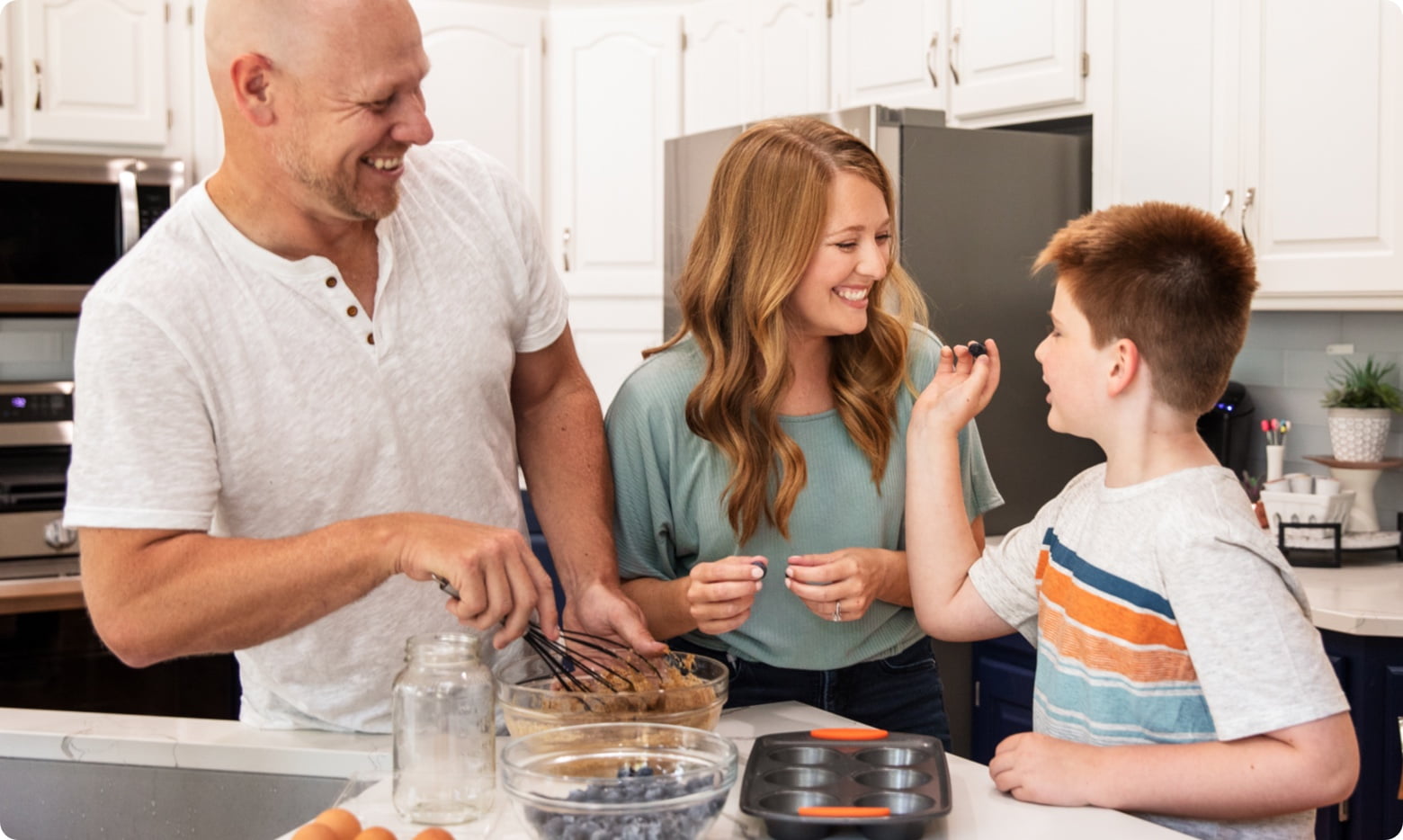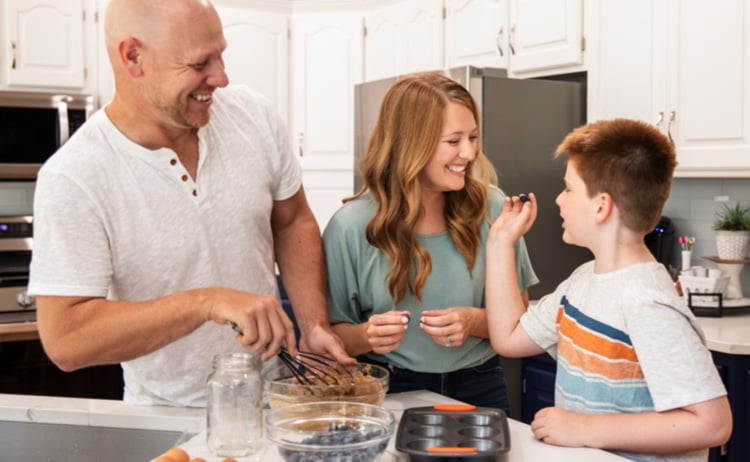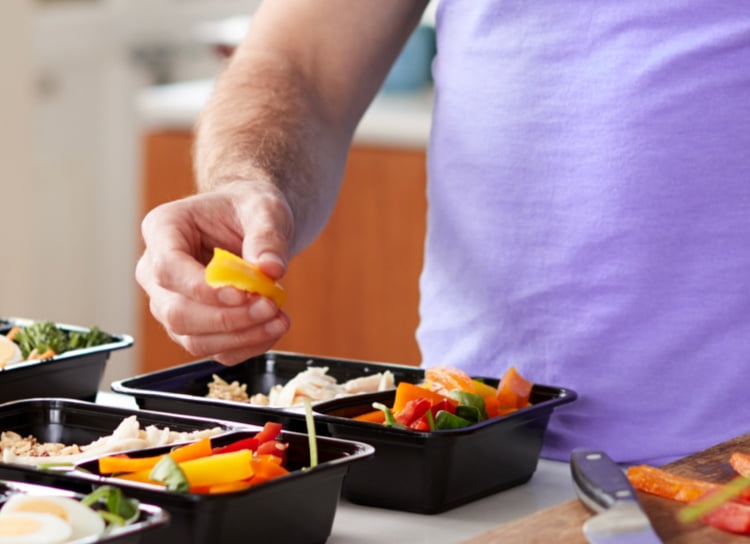Prep for Success: Meal Planning to Fit Your Life
Meal prep: It looks so appealing on social media. All of those containers neatly lined up in the fridge, ready to be taken wherever your day leads. But the perfect symmetry may not work for your life: What if you don’t want to eat the same thing every day? Or what if you don’t have a whole weekend afternoon to dedicate to prepping 21 meals? Luckily, meal prepping isn’t a one-size-fits-all solution. Try these baby steps to create a meal prep and planning routine that works for you.
Baby step 1: Meal components
Solve your “I have nothing to eat!” conundrum by doing a little bit of preparation once a week. By getting “meal components” (think: a batch of grains, a jar of salad dressing, or a tray of roasted chicken and vegetables) prepared when you get home from the grocery store, you can set yourself up for a week of healthy and easy eating.

Not all meal components have to be made from scratch!
Embrace store-bought staples like roasted nuts and seeds, salad dressings and sauces, and pre-cooked proteins like chicken breast strips or canned beans when you don’t have the time or energy to prep ingredients.
Baby step 2: Meal planning
At its simplest, meal planning is just thinking about what you might want to eat in a week, and making sure you have the ingredients ready to prepare it. It could be as basic as picking two recipes that you want to make for dinner, and making enough for leftovers for the other days of the week. Or, meal planning can be as elaborate as planning different items for every meal and snack for the week. No matter where you are in your meal planning journey, know that any kind of meal planning can help you to have more variety in your diet and can take the stress out of deciding what to eat.


Amber Dawkins, a mom with CF, meal prepping with her family.
Not sure where to start? Try one of these approaches to meal planning:
The Category Method:
Assign each day of the week a category. Try meatless Mondays, taco Tuesdays, or chicken Wednesdays. These categories still allow for lots of options, but can help make the task of planning a little less daunting.
The Rotation Method:
Make a few big batches of meals, and plan to rotate through leftovers throughout the week.
The Flyer Method:
Before you plan your menus, take a look at the specials at your grocery store. Use staple ingredients that are on sale or in season to plan your meals.

Make your plan with real life in mind.
If you have a busy lifestyle, plan for meals and snacks that can be eaten on the go—whether you make them yourself or stock up at the store.
Baby step 3: Using template meals and recipes
Like the idea of having meals ready to go, but not sure how you feel about eating the same thing every day? Try a template meal on for size. Prep a few servings of your base layer ahead of time, then add on protein and vegetables (even leftovers from the fridge!) when it’s time to eat. Finish off with fun toppings from your pantry, and there you have it! A different meal for every day of the week, with hardly any extra effort.
| Base layer | Protein and vegetables | Toppings |
|---|---|---|
| Rice or quinoa | Grilled shrimp and vegetables | Guacamole and feta cheese |
| Turkey meatballs and roasted vegetables | Olive oil, lemon juice, and parmesan cheese | |
| Pasta or noodles | Seared tofu cubes and stir-fried vegetables | Peanut sauce and everything bagel seasoning |
| Beef stew | Olive oil, balsamic vinegar, and bacon bits | |
| Salad greens | Canned black beans and raw vegetables of choice | Avocado, apple cider vinegar, and sunflower seeds |
| Chicken-pepper bake | Creamy salad dressing and roasted pecans |

These ideas are only the beginning of where template meals can take you!
Get inspired by your favorite foods and what’s in your refrigerator.
